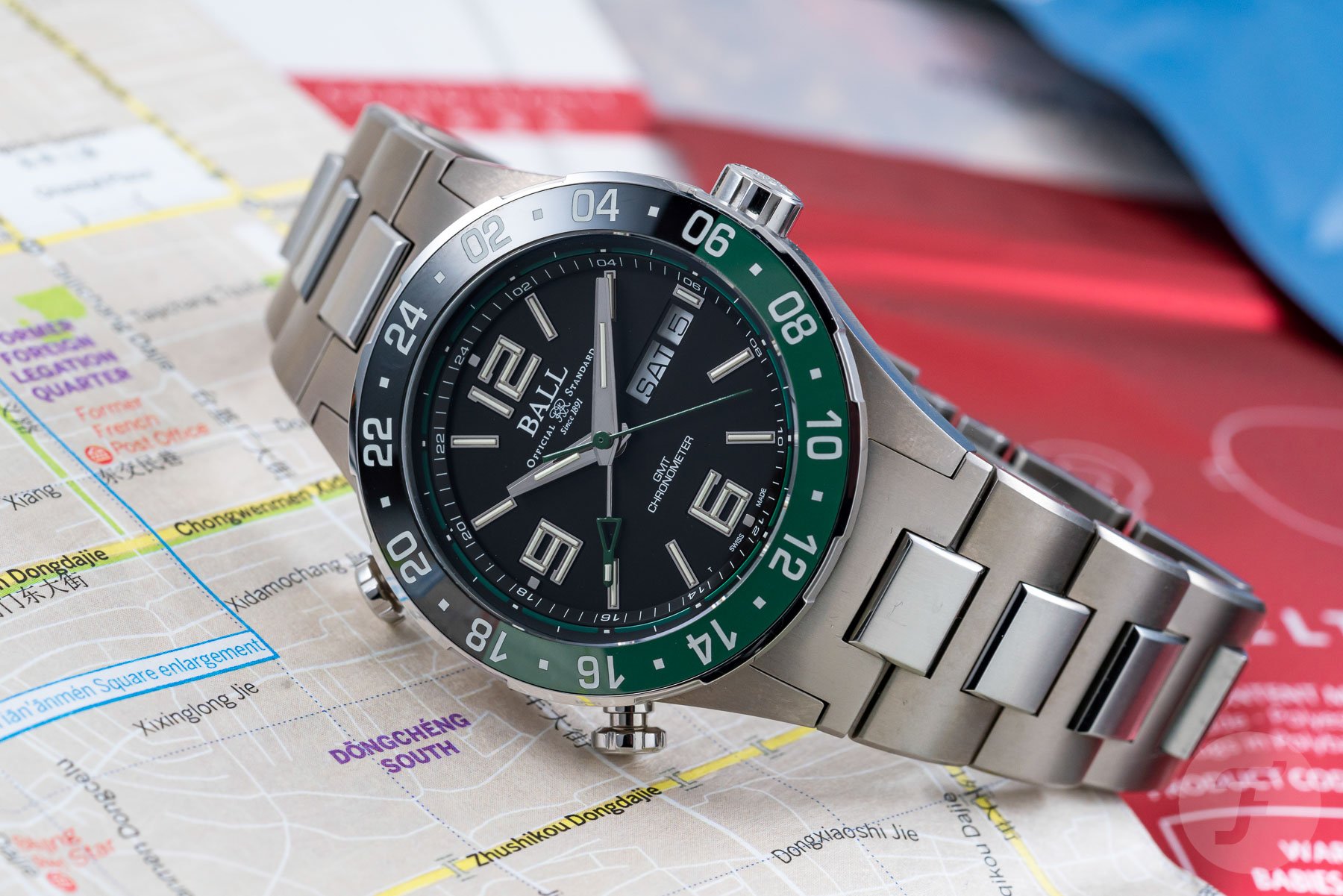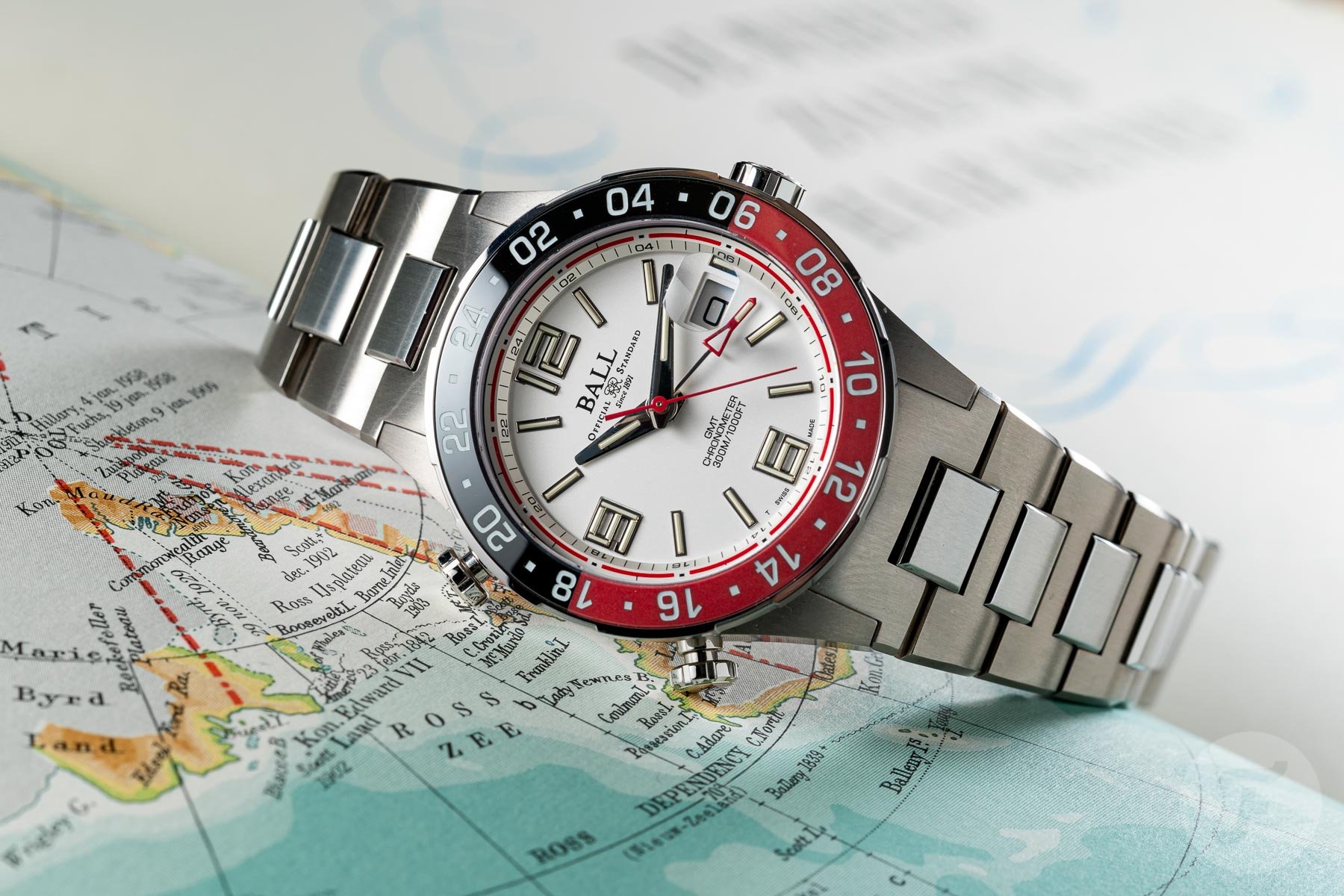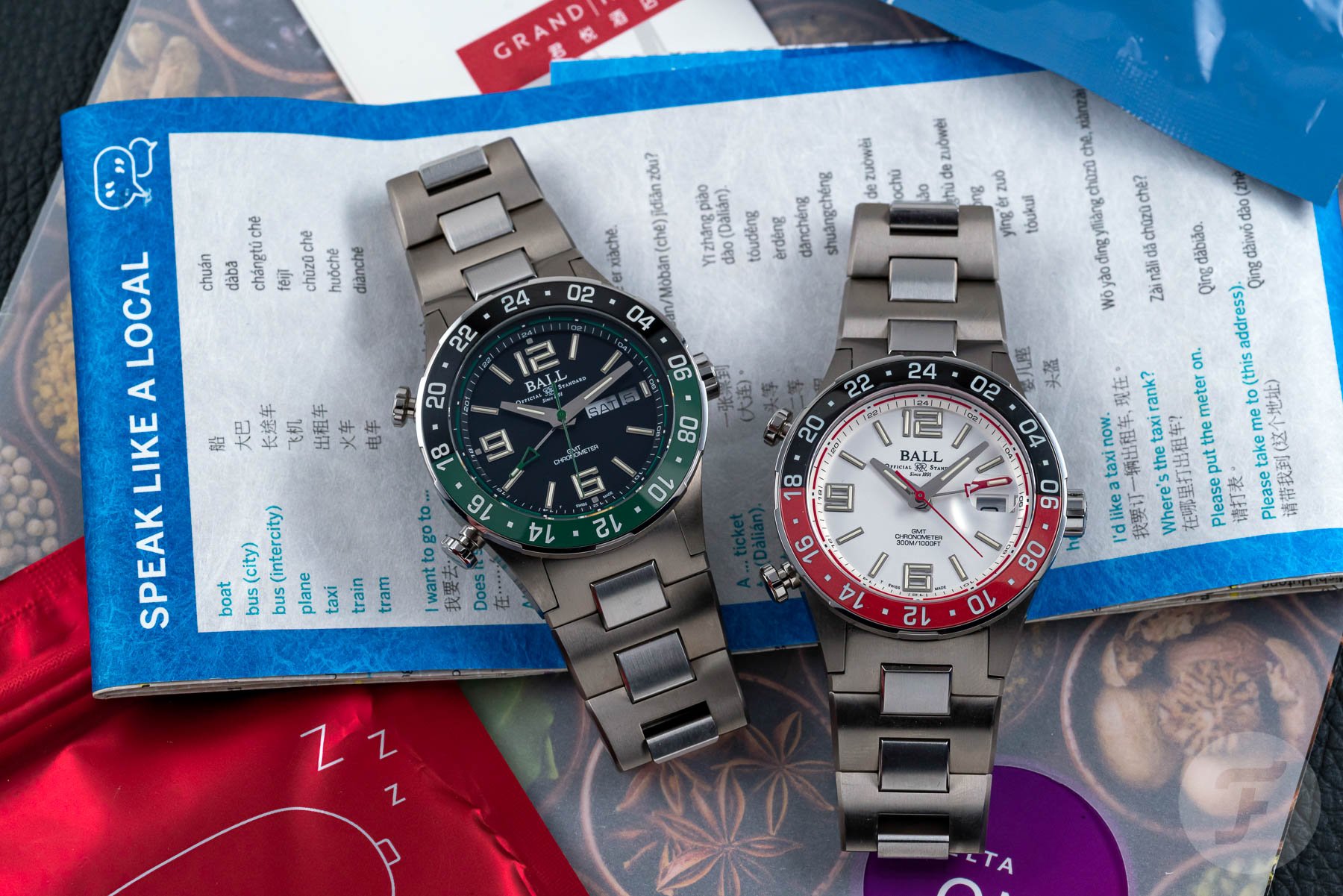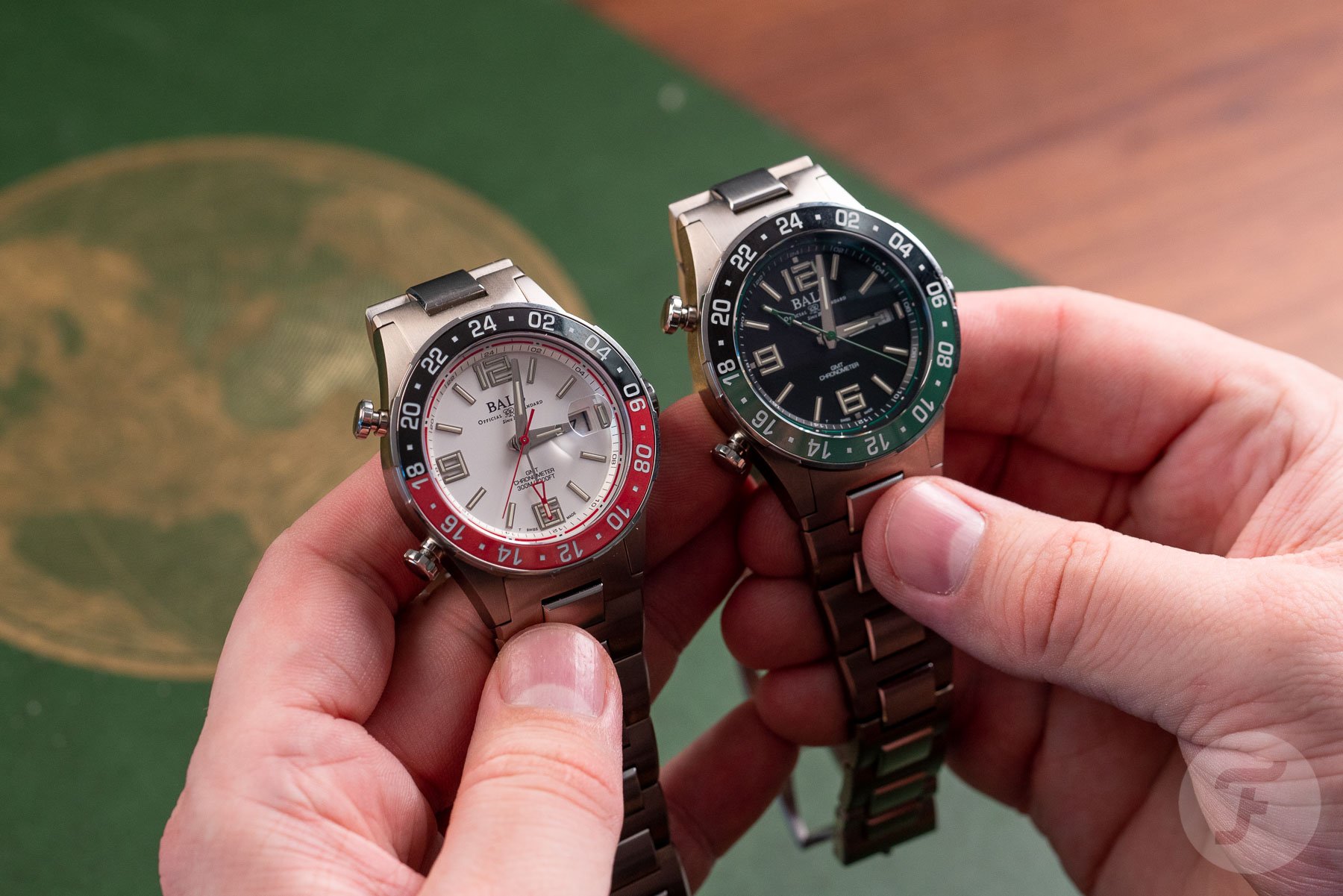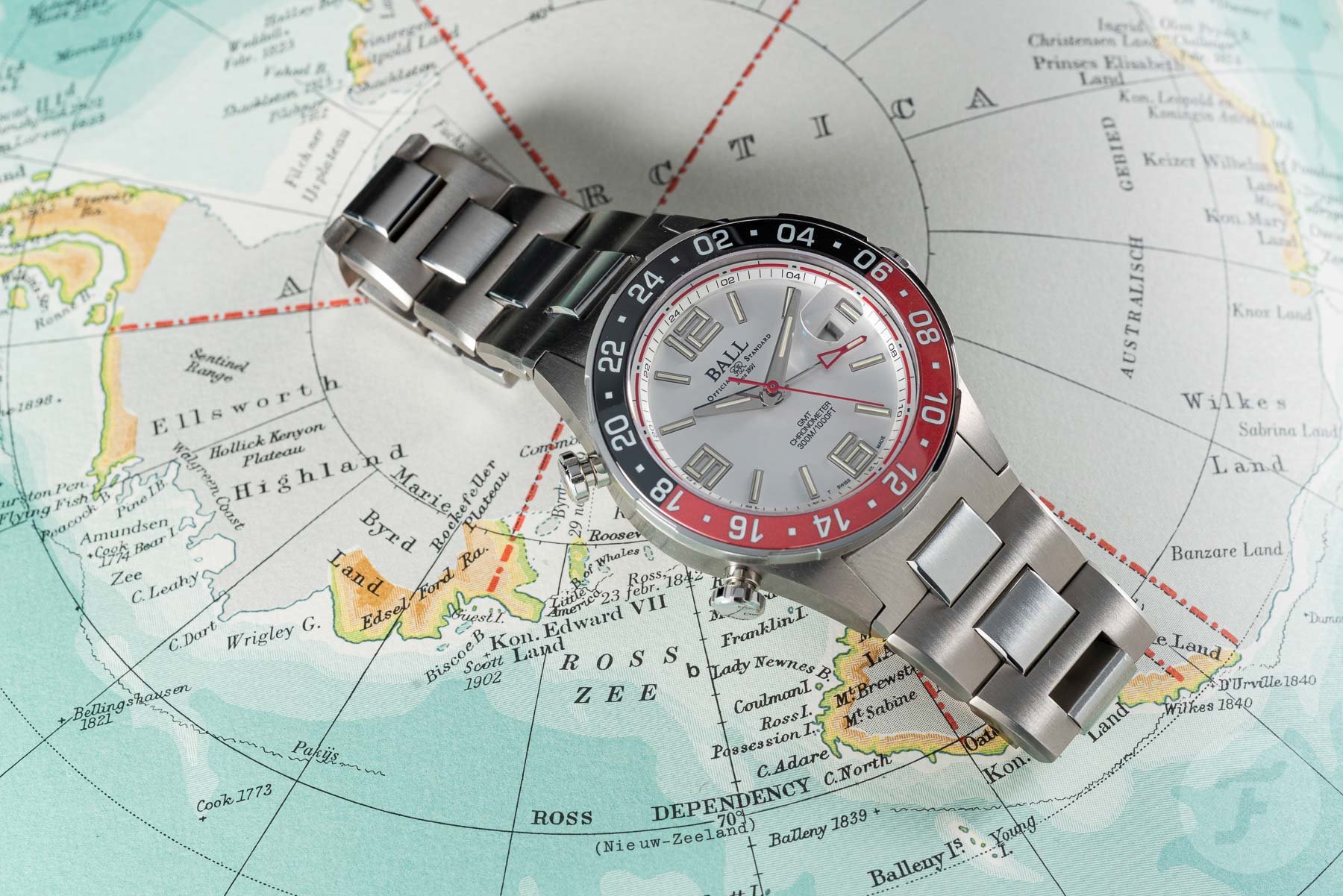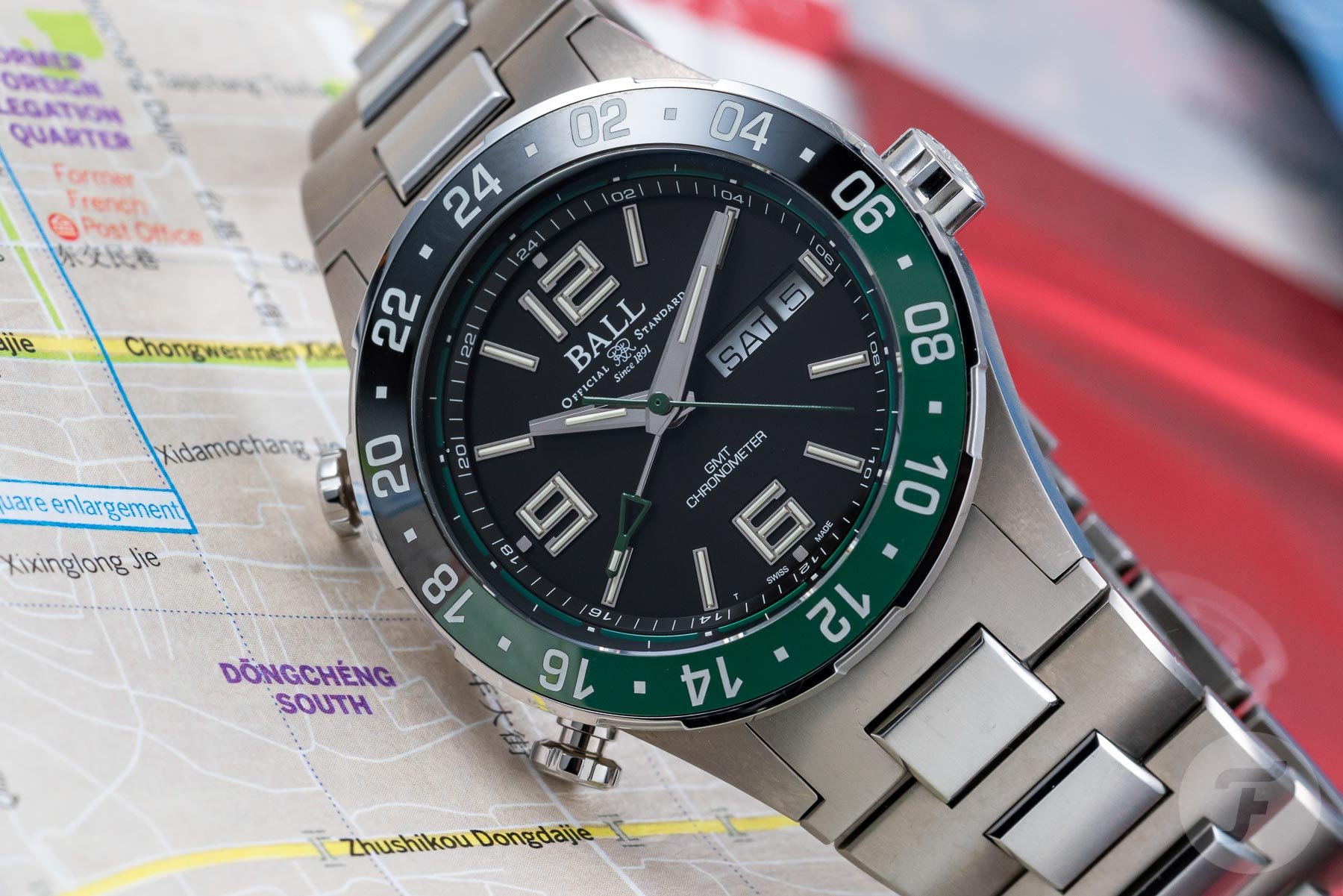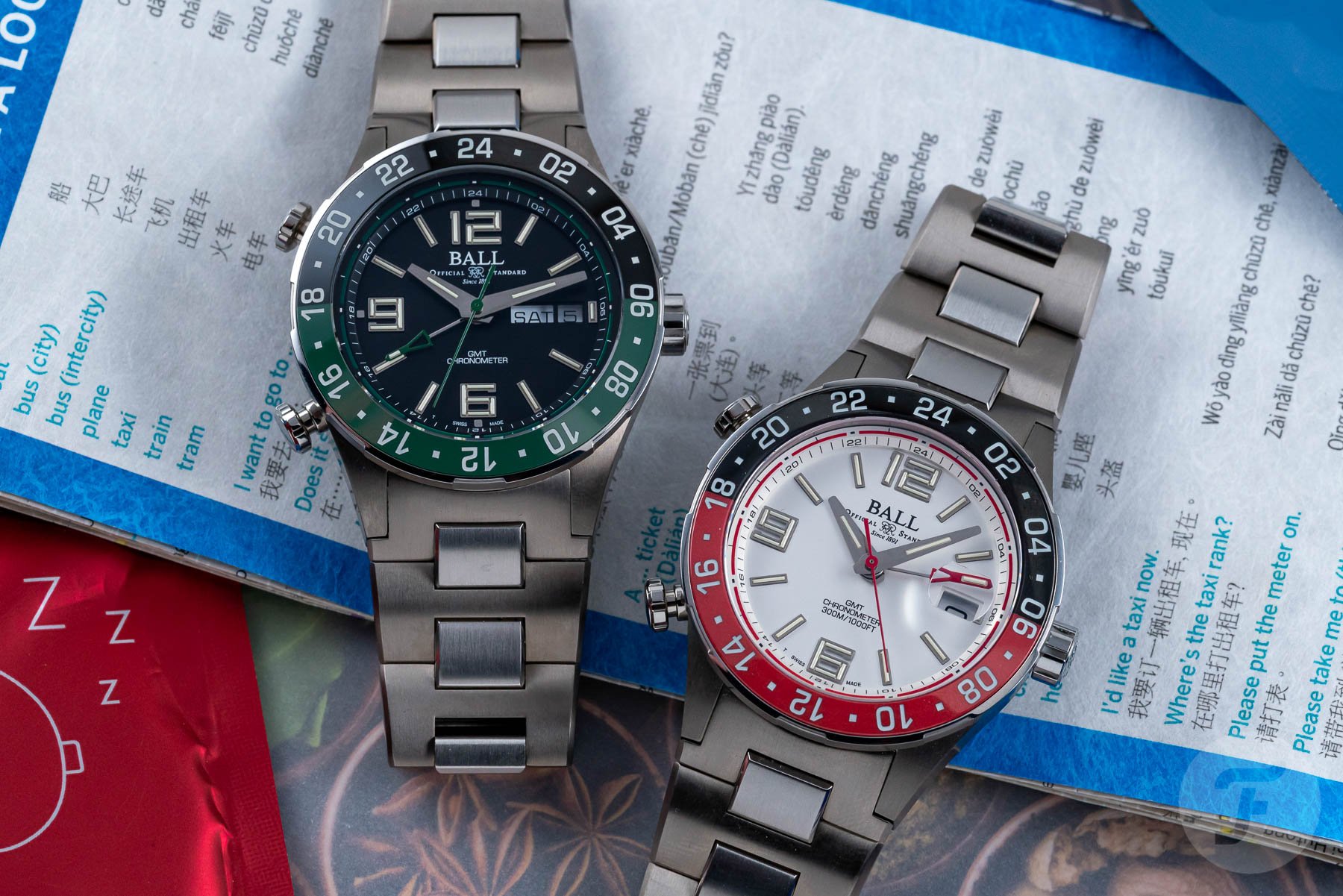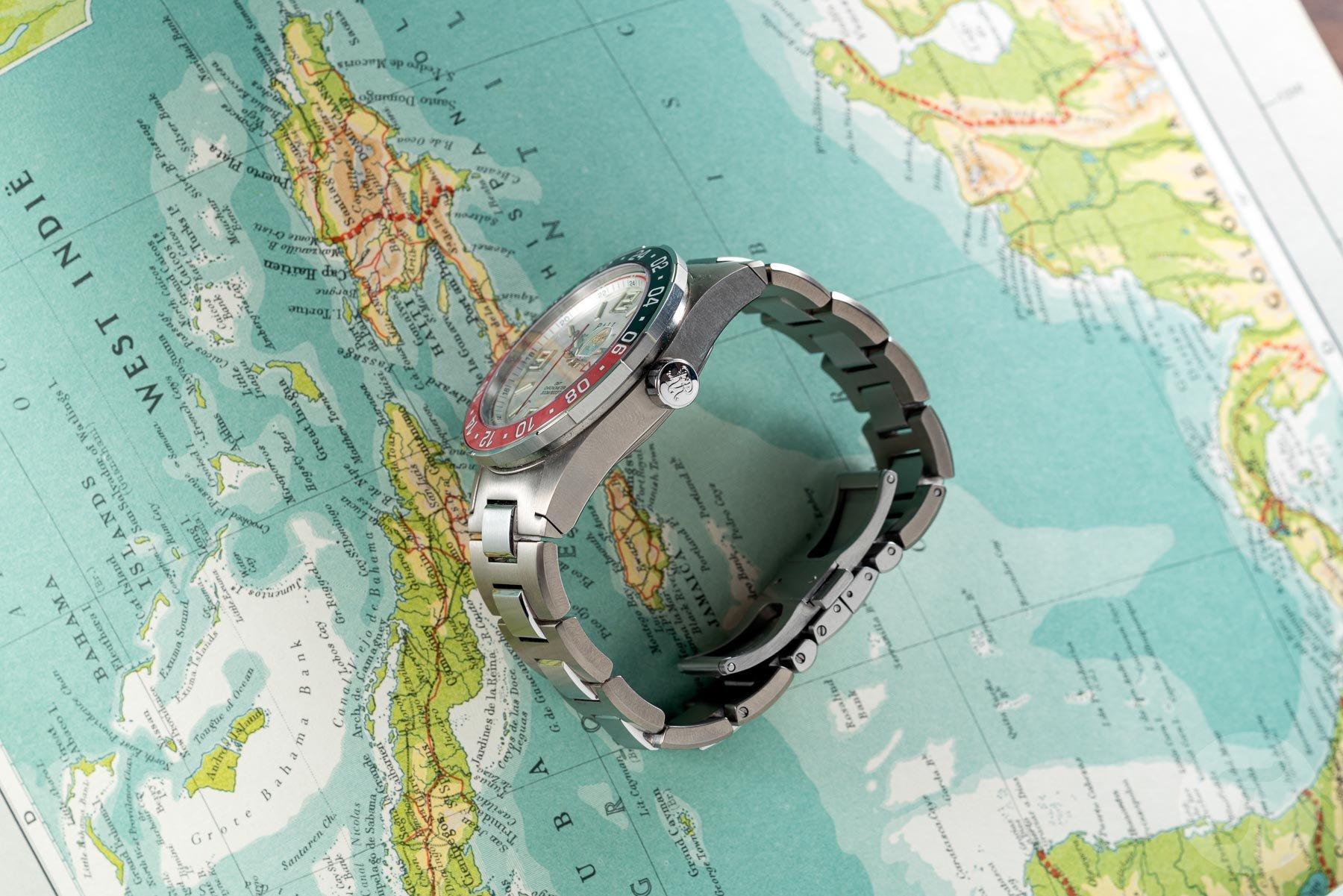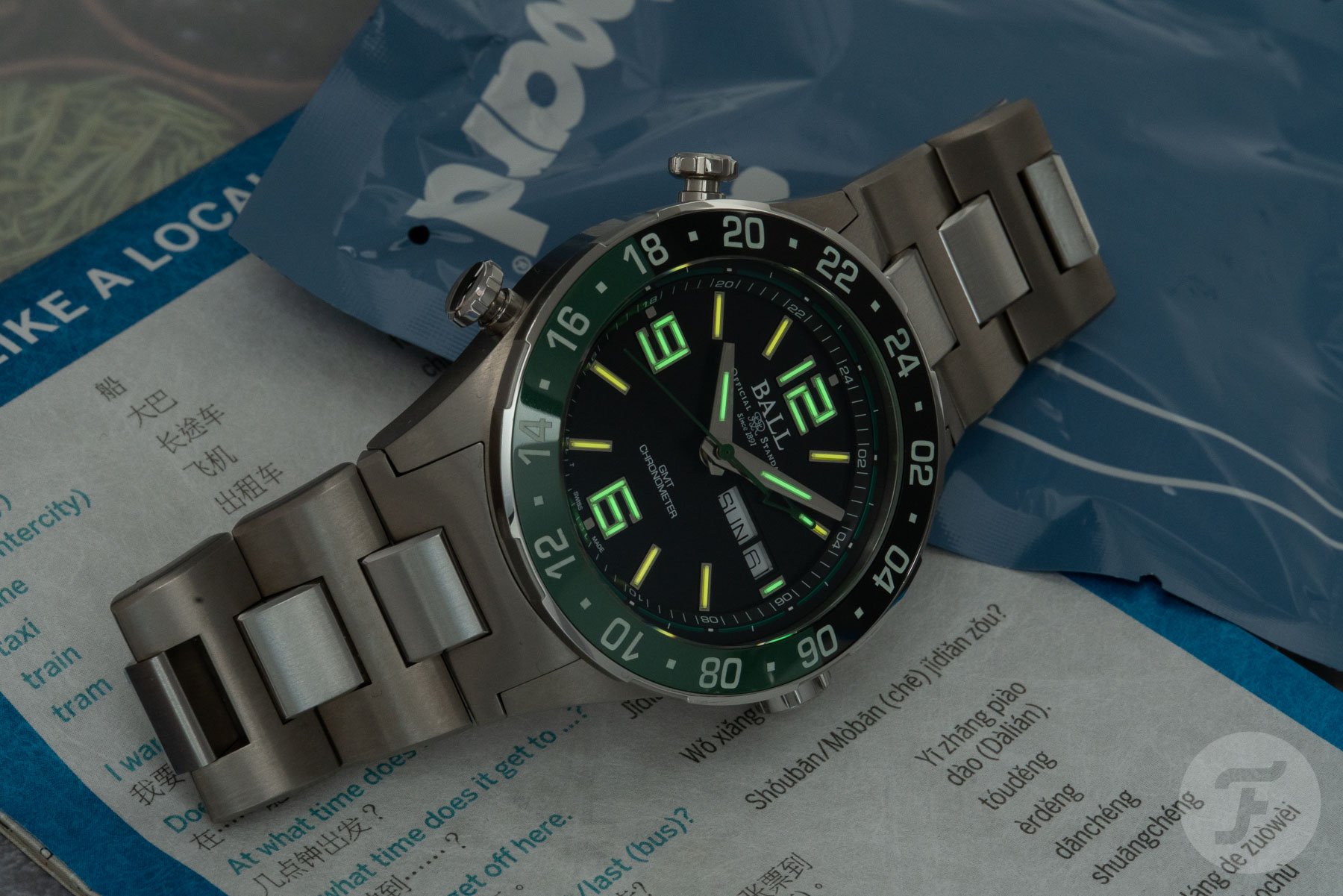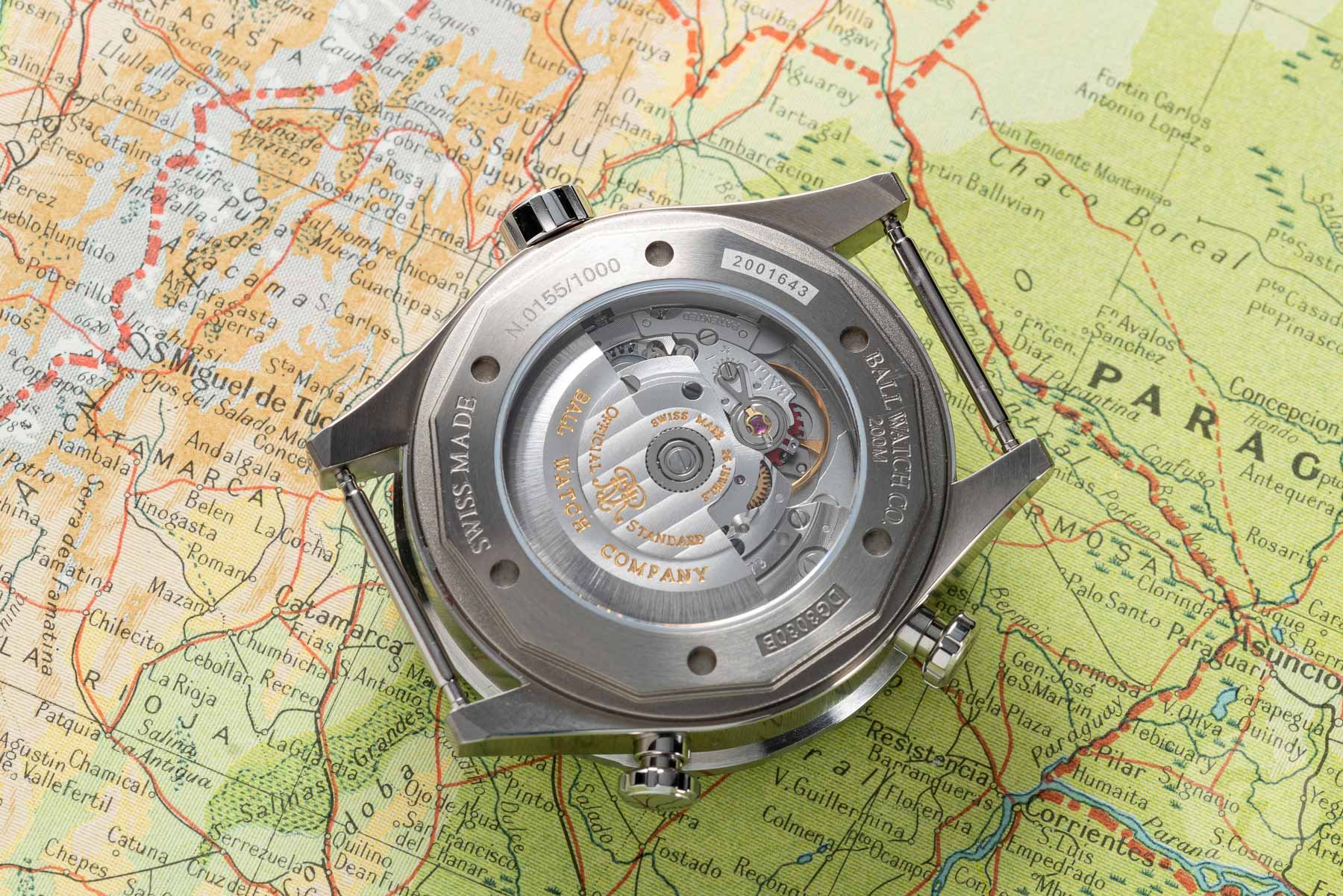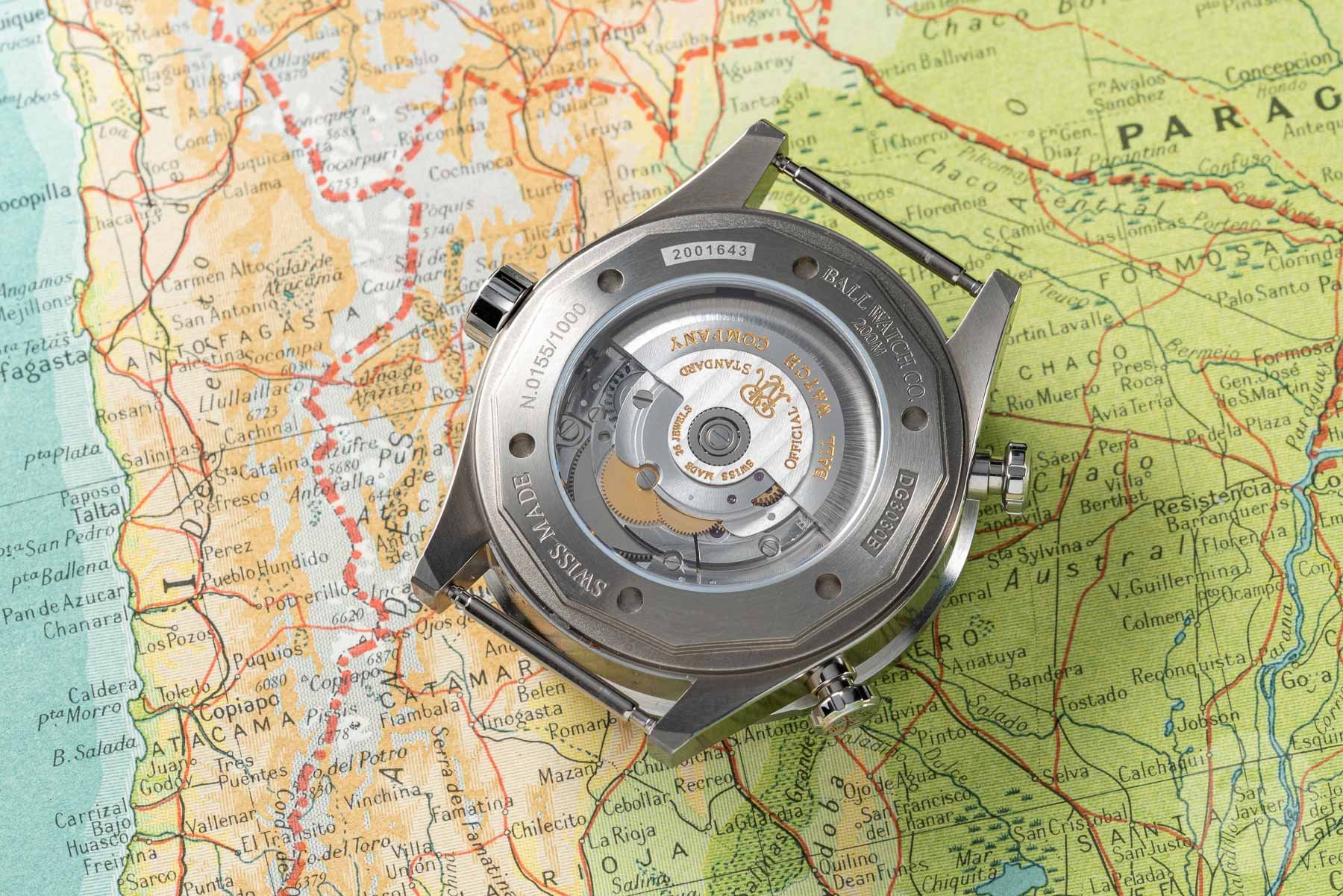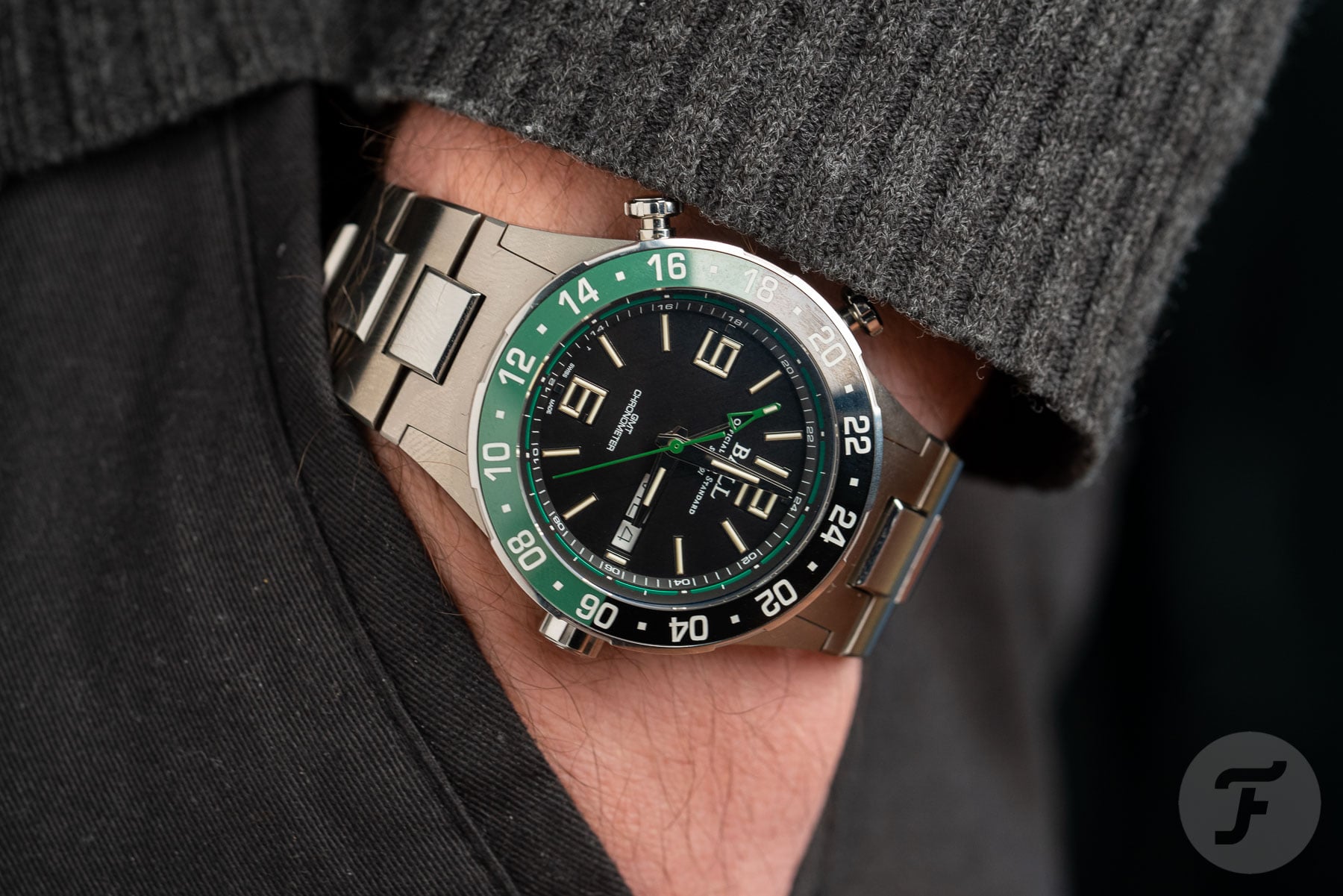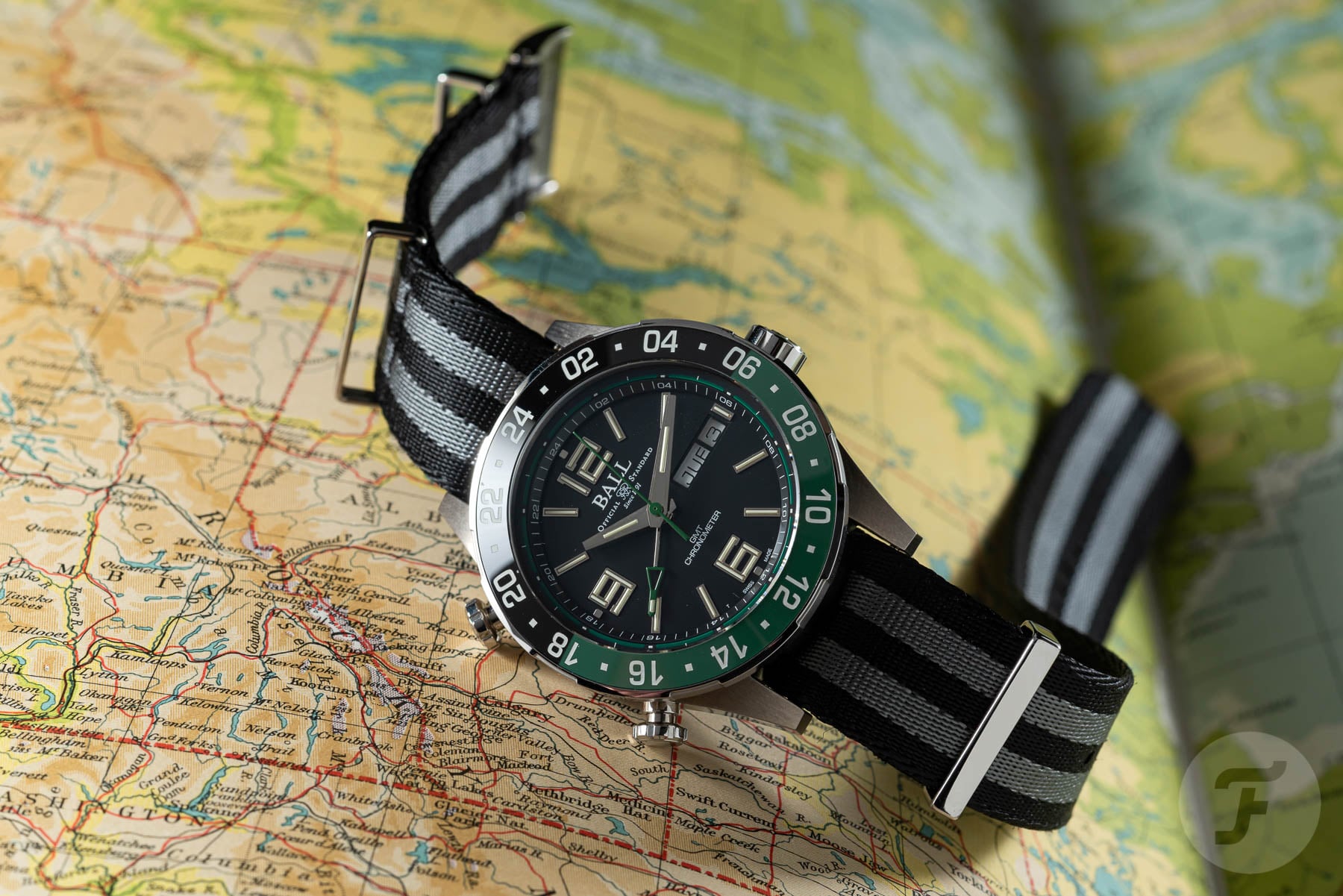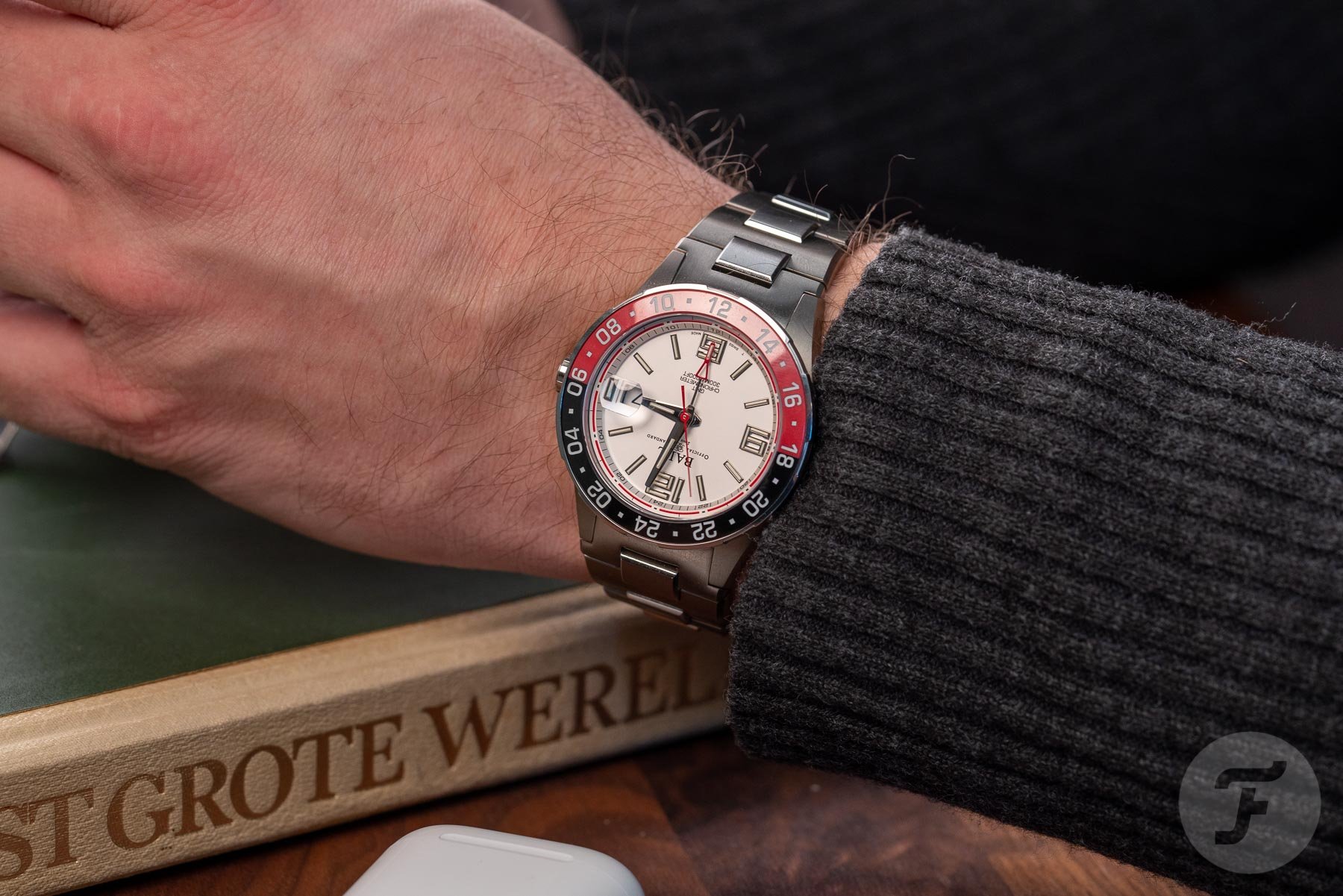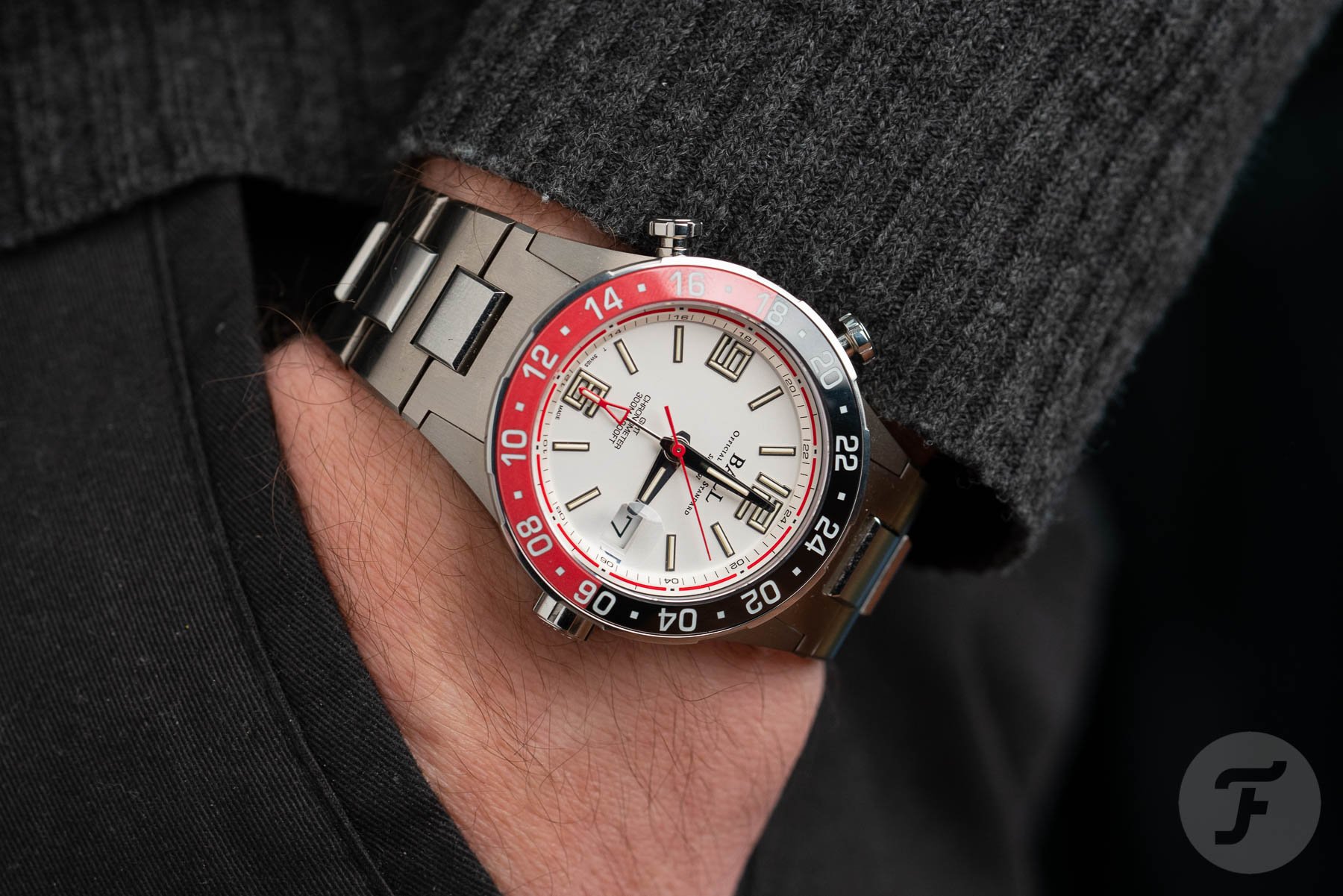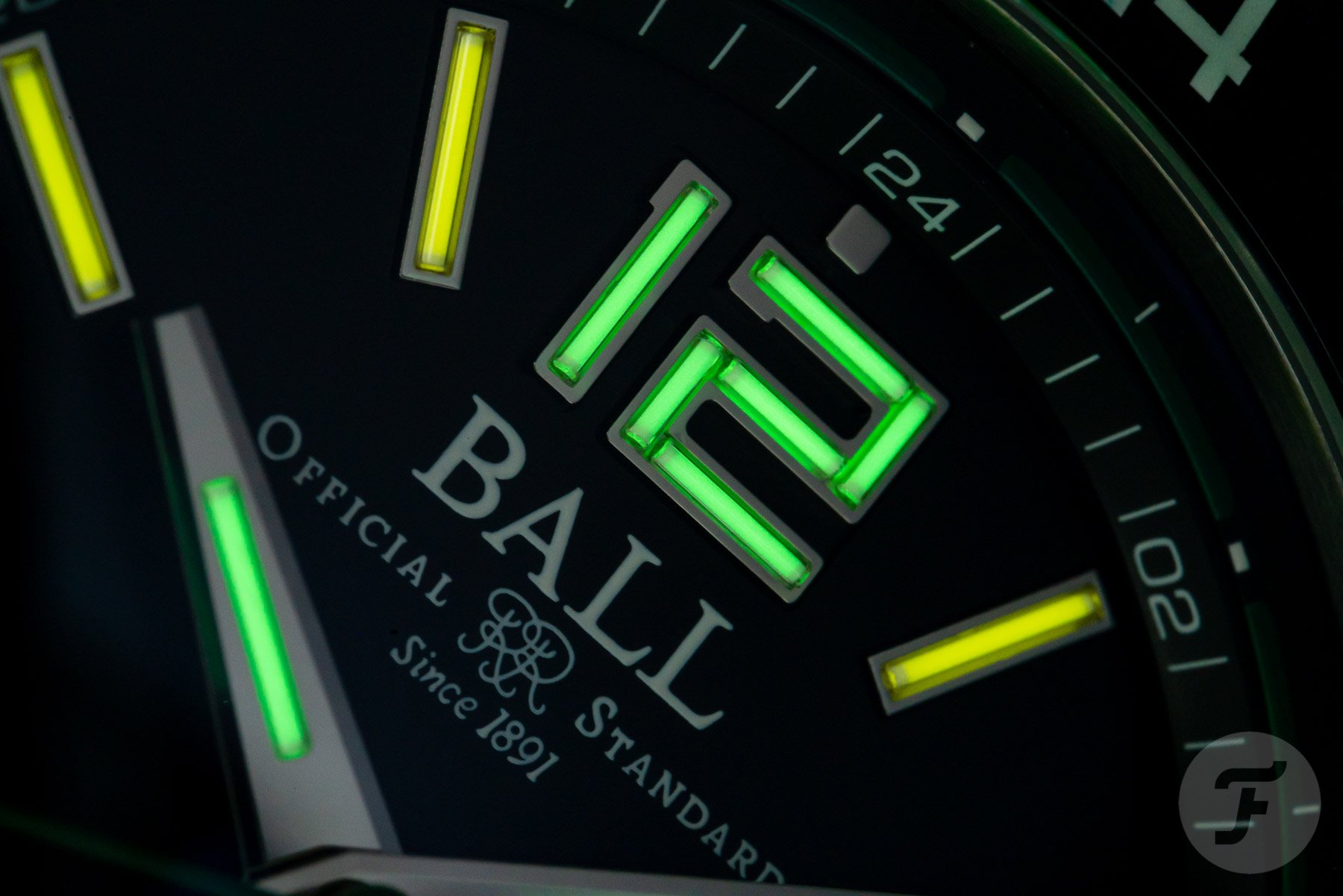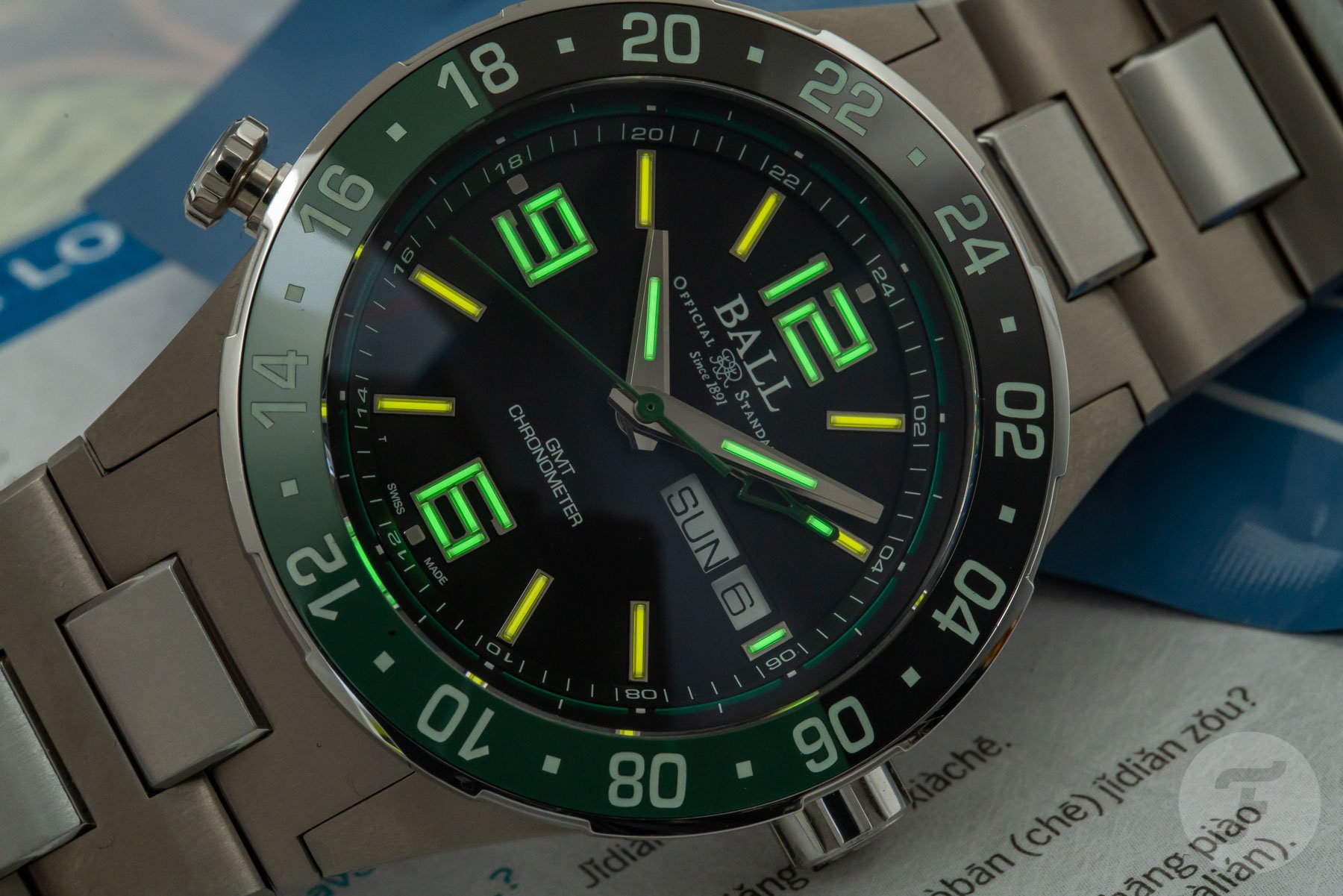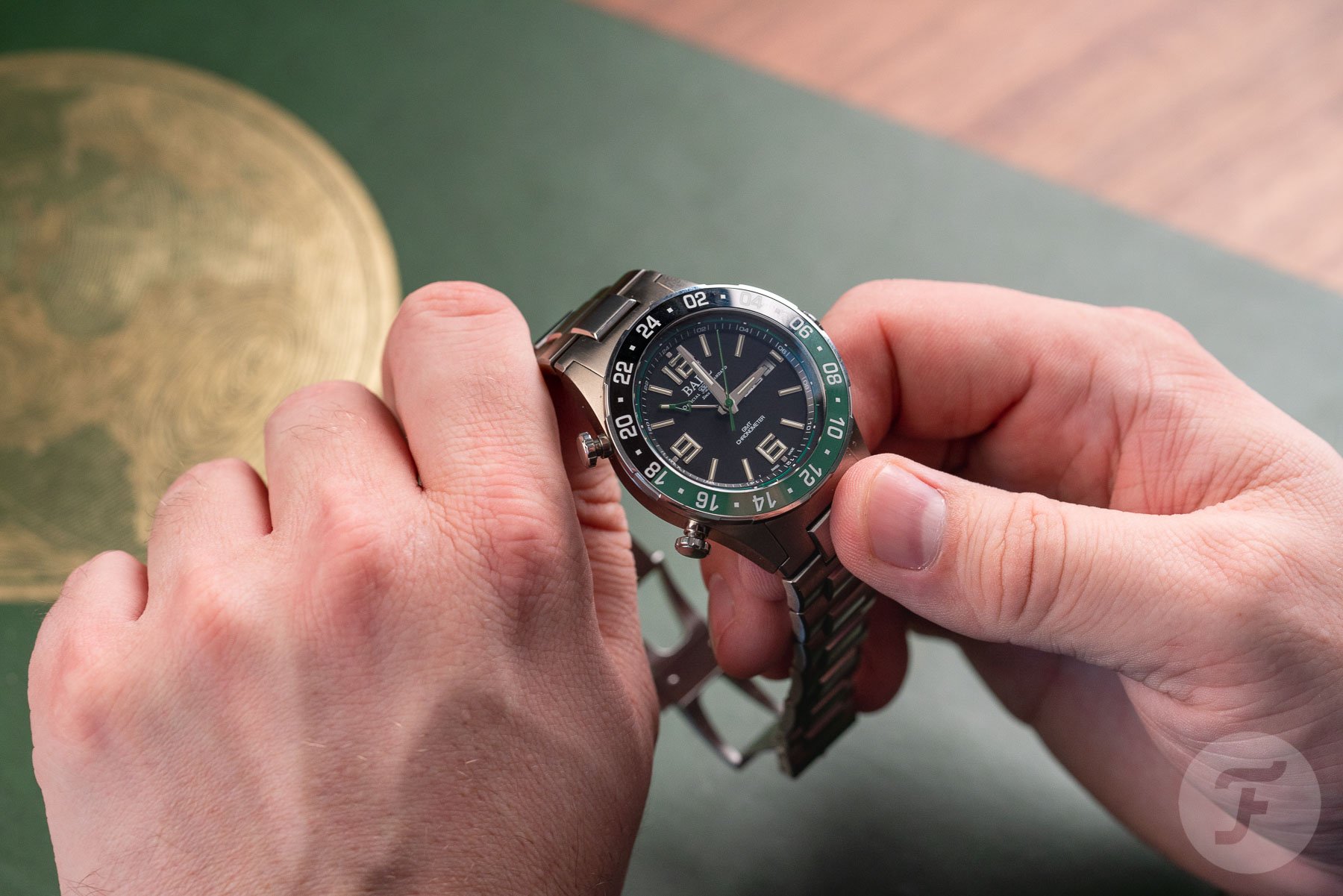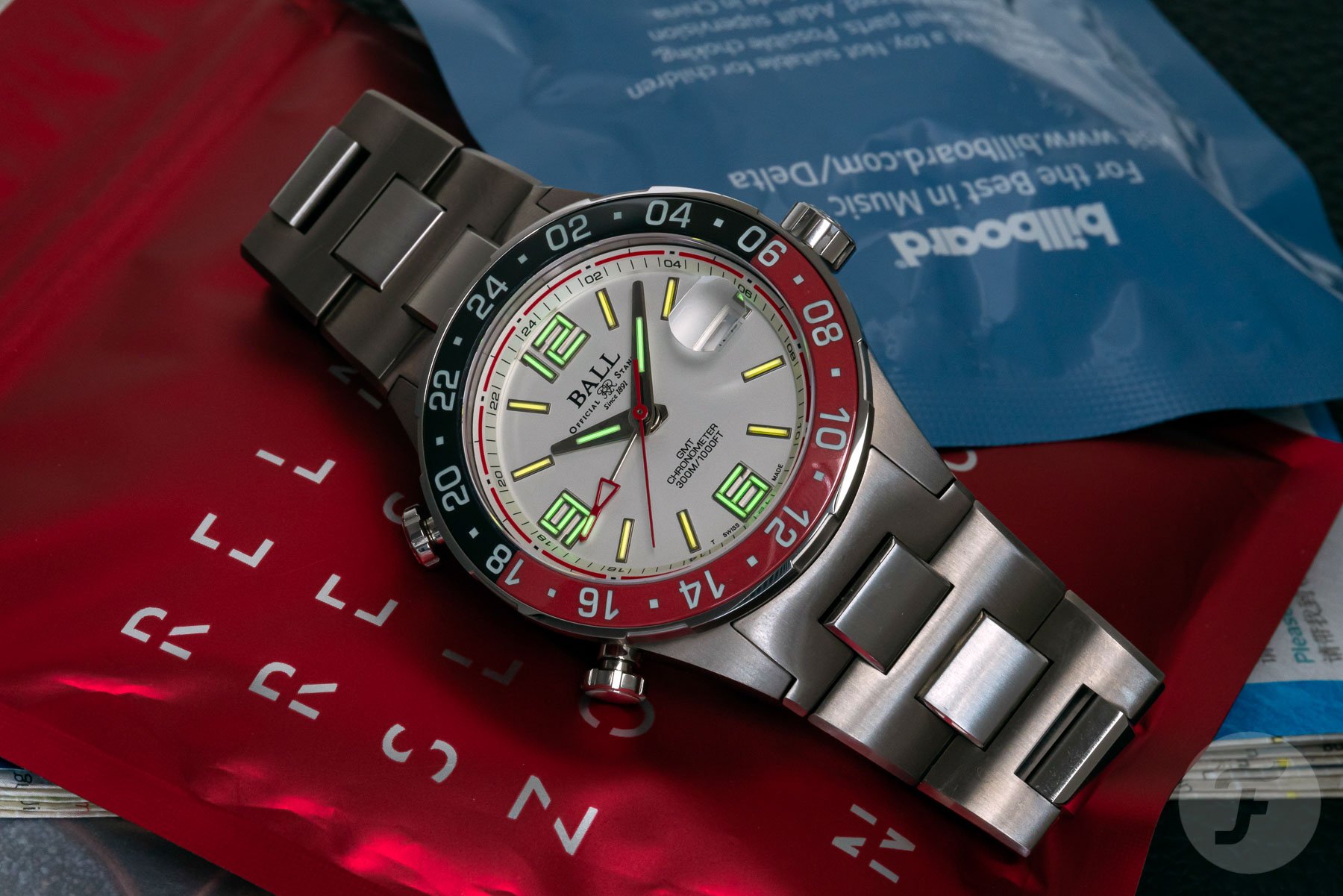Hands-On With The Ball Roadmaster Marine GMT And Roadmaster Pilot GMT Watches
The magic of crossing timezones! Ever since the COVID-related restrictions have been lifted, the prospect of traveling the globe has been an exciting one. What better watch to accompany you during your travels than a nice GMT watch. While there can only be one GMT watch that defined the category as we know it, there are plenty of great alternatives to the Rolex GMT-Master. One of them, or better, two, come courtesy of Ball Watches. The brand’s Roadmaster Marine GMT and Roadmaster Pilot GMT fit the mold of a modern GMT watch. But it would not be a Ball watch if they didn’t bring something special to the table. That’s why I took the opportunity to check out both Ball Roadmaster GMT models up close. Are these two models the perfect affordable GMT watches?
Some of you might know that the GMT is my favorite watch complication out there. It is practical as well as magical. It’s practical in the sense that you can keep track of the time in two or three timezones. Additionally, it is magical as these watches represent the great spirit of travel. I realize that some people who travel the globe a lot — especially for work — might not always see the romance of travel. But getting on a plane to explore new places still comes with a certain romance for me, a romance that is shaped by different places in the world. I also see the spirit of travel represented in design, hotels, and cultures, but the best reminder of all is a GMT watch.
The Ball Roadmaster collection
For me, the ultimate representation of that traveling spirit is a vintage Rolex GMT-Master. When I wrote an article not too long ago about the top five alternatives to the current Rolex GMT-Master II, I explained that the GMT-Master ref. 1675 would be my ultimate pick. It beats the current GMT-Master II easily in overall presence. It doesn’t feel as cold and distant as the current shiny GMT-Master II models. Sure, the modern GMT-Master might be the better pick in terms of specs. But as you may have guessed by now, a GMT watch is not about modern specs for me at all.
Some of you mentioned the Ball Roadmaster GMT models in the comments underneath the article. While Ball is definitely a well-known name, I have to shamefully admit that I have not been keeping track of its latest releases. But I soon discovered that the brand’s Roadmaster GMT models were indeed very interesting pieces. Two things about them immediately stood out. The first was the dial design with its characteristic luminescent micro gas tubes, and the second was the two pushers on the left side of the case. These pushers operate the GMT module that Ball specially developed for these watches. Add the great variety of available dial and bezel colors, and I was more than interested to find out more.
The Ball Roadmaster collection
The two watches are part of Ball’s Roadmaster collection, which gets its name from the people guiding railroad infrastructure. As some of you might know, the brand has a rich history connected to the American railroad system. It’s a story that is too detailed and interesting to be done justice in this review. But I definitely suggest you check out the story on the official Ball website. The Roadmaster collection is a series of modern tool watches that use different materials and distinctive designs. All of the watches in the collection feature Ball’s characteristic micro gas tubes for luminosity. The tubes are filled with tritium gas and require no external charging. So in darker light conditions, they light up brightly automatically.
Within the collection, there is a wide array of models, from regular dive watches and dive chronographs to world timers. But the watches that immediately grab my attention are the Roadmaster GMT models. They stand out because of their colorful bezels, characteristic 3, 6, and 12 numerals, and overall good looks. At first, I was quite overwhelmed with the number of watches in the collection. But if you look more closely, you will soon find out that Ball offers its watches in a great variety of color combinations. This is especially true with the GMT models.
The Roadmaster GMT models
The collection offers everything from the classic “Pepsi” bezel/black dial combo to a green/black bezel paired with a white dial. The latter in particular looks very nice because Ball picked a great shade of green. On top of that, it moves away from the archetypical GMT color scheme to give it more character. But you can also opt for a fully blue or black bezel if you prefer something simpler. Ball kindly sent us the Roadmaster Marine GMT with a black dial and a green/black bezel for this review. The Roadmaster Pilot GMT we reviewed featured a white dial and a black/red “Coke” bezel.
At first glance, you might wonder what the difference between the two is. But you may have noticed that the Roadmaster Marine GMT features a day-date window at 3 o’clock, whereas the Roadmaster Pilot features a date window with a date magnifier, or “cyclops”. They also feature a slight difference in movement, but we will get to that in a bit. The Roadmaster Marine was first introduced back in 2019. Ever since, it has been a very successful watch for the brand. The Roadmaster Pilot GMT is a new addition to the lineup, available for pre-order now and with orders scheduled to start shipping this month. While I am generally not the biggest fan of the cyclops, I prefer it over the wider day-date window. Thus, out of the two, the Roadmaster Pilot is my favorite.
The specs are spot on
But before I get into my preferences, let’s discuss some specs. Both models feature a 40mm titanium case that is 14mm thick and has a lug-to-lug length of 47.8mm. Both watches come with a screw-down crown, but the Marine model has 200 meters of water resistance. Interestingly, the Pilot model is water-resistant to 300 meters. The watches come on a bracelet made of titanium and stainless steel. The H-links of the bracelet are made of brushed titanium, and the center links are fashioned in polished stainless steel. The choice to create the bracelet from these two materials gives the watches a bit more weight. On top of that, it enables Ball to keep the prices a bit lower.
The Roadmaster GMT models feature a bidirectional 24-click titanium bezel with a ceramic inlay. As mentioned before, Ball has really nailed the different colors you can choose from. Furthermore, the watch is equipped with a sapphire crystal in the front and a sapphire crystal case back through which you can see the movement. Overall, it’s a great set of specs for both watches that make them great modern tool watches and fantastic daily wearers.
The characteristic dial design
When we first got the watches in the office, I was especially curious about how the dial design would look in real life. At 3, 6, and 12 o’clock, the digital numerals give the dial design a very distinct character. Before I saw the watches in the metal, I thought their design and size might be a bit too prominent, despite their uniqueness. But I quickly found out that they are not too prominent at all, and that once on the wrist, the whole design comes together really well. You will find micro gas tubes on the hour, minute, and GMT hands, as well as on the indices for great low-light readability.
When it comes to the different dial and bezel combinations, for now, the Roadmaster Marine GMT is available in more colors. The watch is available with a black, brown, blue, white, or green dial. The bezel options are black/red, black/blue, black/green, black/brown, blue/green, blue/red, fully blue, fully black, and fully green. The newer Roadmaster Pilot GMT is available with a black, blue, green, or white dial. The bezel colors are black/red, black/blue, black/green, blue/green, and blue/red. We might see the number of options increased to the level of the Roadmaster Marine depending on the success of the new introduction. But do check out all of the different options because the number of variations is rather impressive.
Two different calibers
Ball uses the automatic caliber BALL RR1203-C for the Roadmaster Marine GMT, and the automatic BALL RR1204-C for the Roadmaster Pilot GMT. Both movements are based on the COSC-certified version of the Sellita SW220-1 or the ETA 2836-2 with a special mechanism to set the GMT hand through the two pushers on the left side of the case. The Sellita and the ETA movements operate at 28,800vph and have 38 hours of power reserve. Between the two models, the most visible difference is the day-date versus date-only functionality. But there is more to the story.
The in-house-developed, patented mechanism for the independent quick-set on the Marine model lets you adjust the GMT hand forward and backward in one-hour increments. This makes it a so-called “office GMT”. On the new Pilot model, however, the mechanism has been updated to independently adjust the main 12-hour hand forward and backward in one-hour increments. The mechanism is operated by using the pushers on the left side of the case. They are locked and unlocked simply by turning them. Pressing the upper pusher at 10 o’clock moves the hand forward, and pressing the lower pusher at 8 o’clock moves the hand backward. It’s a very easy-to-use mechanism that Ball has updated to make the new Pilot model a true “traveler’s GMT”.
The Roadmaster GMT models on the wrist
The first thing that stands out when putting the watches on your wrist is how comfortable they are. The 40mm cases sit very comfortably on the wrist, and the 14mm height is substantial but easy to wear. While they’re not as ultralight as most titanium watches, I have to say that I actually like that. The choice of stainless steel center links did help in adding that extra bit of weight to make the watches feel substantial.
As I stated, these watches feature a 47.8mm lug-to-lug, but in reality, it is a bit more due to the construction of the end link. Ball uses a half link for the first center link, as you can see in the pictures. That first half link does not curve down, essentially increasing the lug-to-lug a bit. For me, it was never a problem because the watch fit my wrist perfectly. All the other Fratello team members that tried it on also had that same experience. Despite the slightly different construction of the bracelet, it is easy to remove and swap for a strap if you prefer that. Because of the light weight and the colorful presence, I can see both Roadmaster GMT models be absolute strap monsters. For me, it looks best on its original bracelet.
Wearing the Roadmaster GMT models
I had the watches on my wrist for over a week, and I have to say that I was impressed with both of them. The overall presence is colorful but never loud. Part of that comes from the fact that the titanium case and H-links of the bracelet have a brushed finish. Only the stainless steel center links of the bracelet feature a polished finish for some nice contrast. Both models wear very nicely indeed thanks to the 40mm size and the comfortable bracelet. If there was one thing I felt could have been better, however, it’s the quality of the stainless steel butterfly clasp. Sometimes it didn’t open as easily as I would have liked.
When it comes to using the in-house-developed GMT mechanism, it is incredibly simple after playing with it. It is best operated when not wearing the watch. You will quickly find that both pushers turn backward and forward with little clicks, locking and releasing the mechanism. Once you have released it, you can use the pushers to set the local or home time, depending on the model. I liked the visual addition of the pushers on the left side of the case. They give the watches even more character and functionality.
Drawn to the dark side
Besides the fact that I loved wearing the watches during the day, their presence at night was equally impressive. First off, the white 24-hour markings on the bezel light up thanks to the Super-LumiNova that fills them. But it’s the micro gas tubes on the hour, minute, and GMT hands that are the true star of the show. Because Ball uses tritium gas, you do not have to charge them. When it is pitch black, the illuminated parts light up brightly, making it super easy to read the time and use the watch in the dark.
The luminescence adds another dimension to both of these already-impressive timepieces. Now, when it comes to pricing, both models are equal. Depending on where you are, the price will differ somewhat due to local tax rates. In the Netherlands, where the Fratello offices are, the price for both is a little over €2,900. In the United Kingdom, the price for both watches is a little over £2,500, and in the United States, the price is $3,750. Please do check the Ball website for pricing in your specific country. Sticking to the price in euros, I have to say that for around €3K, these two watches are hard to beat in terms of specs and character.
Final Thoughts
Overall, I loved wearing both the Ball Roadmaster GMT models. But I do have a clear preference, as you may have guessed. Both technically and aesthetically, the Roadmaster Pilot GMT is my clear favorite. I prefer the date window with the date magnifier over the wider day/date indication of the Roadmaster Marine. Additionally, Ball has changed the Pilot to a true GMT, making it a more practical choice. Add the extra 100 meters of water resistance for any deep-sea adventures you might have, and the Pilot GMT seems to be the obvious choice. But the model does not come in the same wide array of colors (yet).
Overall, both watches are among the absolute best that your money can buy for around €3K. The modern materials are on point. The design has plenty of character without feeling like a standard GMT watch. Furthermore, on the technical front, Ball has created a unique and practical GMT module that is easy to operate. During the time we had the watches in the office, I talked to multiple people about actually putting this on the list as a future purchase. I genuinely had a lot of fun wearing and using the Ball Roadmaster Pilot GMT. Both Roadmaster GMT models are impressive releases for anyone looking for a great affordable GMT watch. And I just so happen to be one of those people.
For more information, visit the official Ball Watches website.
Find and follow me at Jorg Weppelink • Instagram.

